Market Report - What's Happening Now, And What It May Mean For 2022
A quick summary
- The market took a round trip from December 10 to 23 for a net gain of 0.29%.
- Omicron took much of the blame, but that's not what caused the selloff.
- People are determined to go out and spend on travel and entertainment.
- There was only one dip of 5% in 2021. There were 8 of them in 2020.
Consumers are determined to go out and spend
Here are five stocks that led the pack last week, even as the market was getting slammed. They are all involved in face-to-face travel and entertainment.
Expedia [EXPE] Up 19.0%
(Click on image to enlarge)
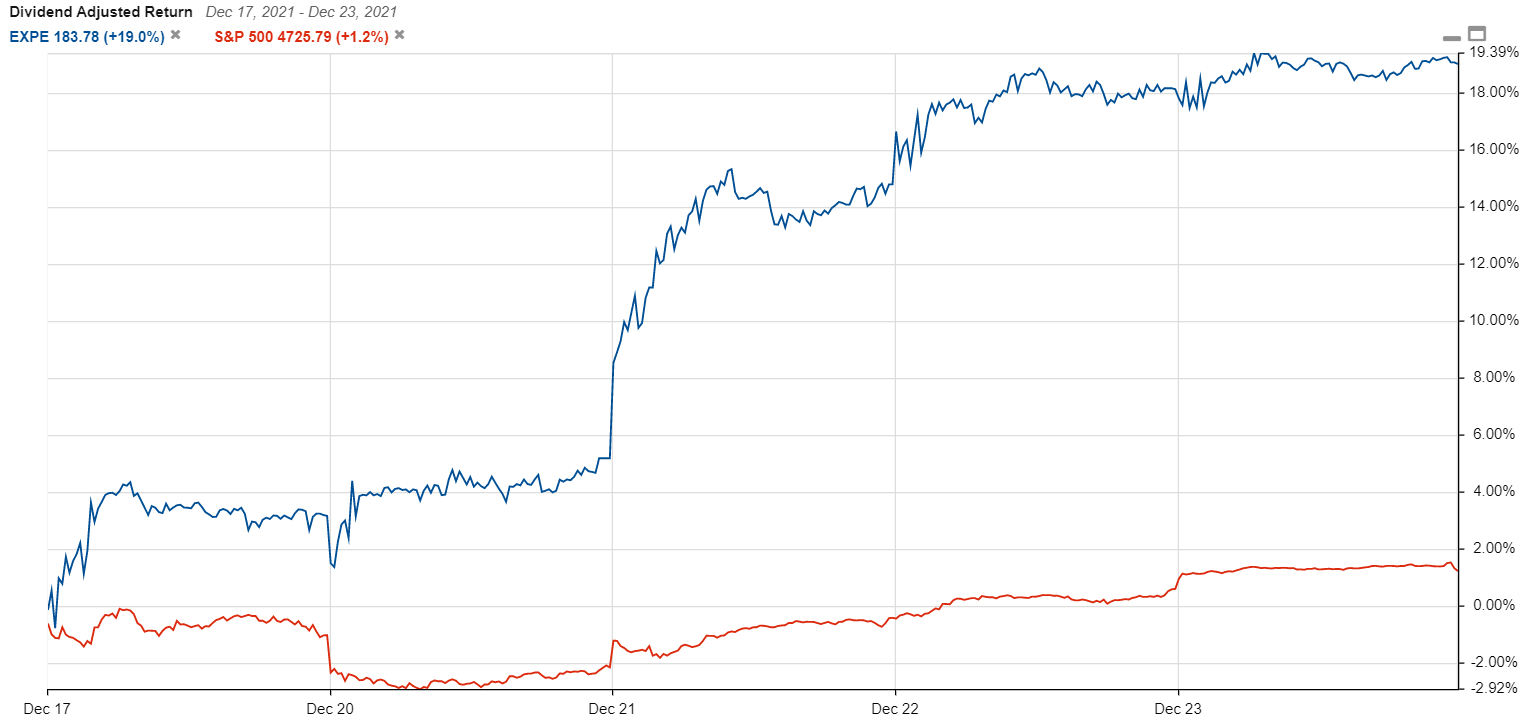
Carnival Cruise Lines [CCL] Up 20.7%
(Click on image to enlarge)

Live Nation Entertainment [LYV] Up 16.9%
(Click on image to enlarge)
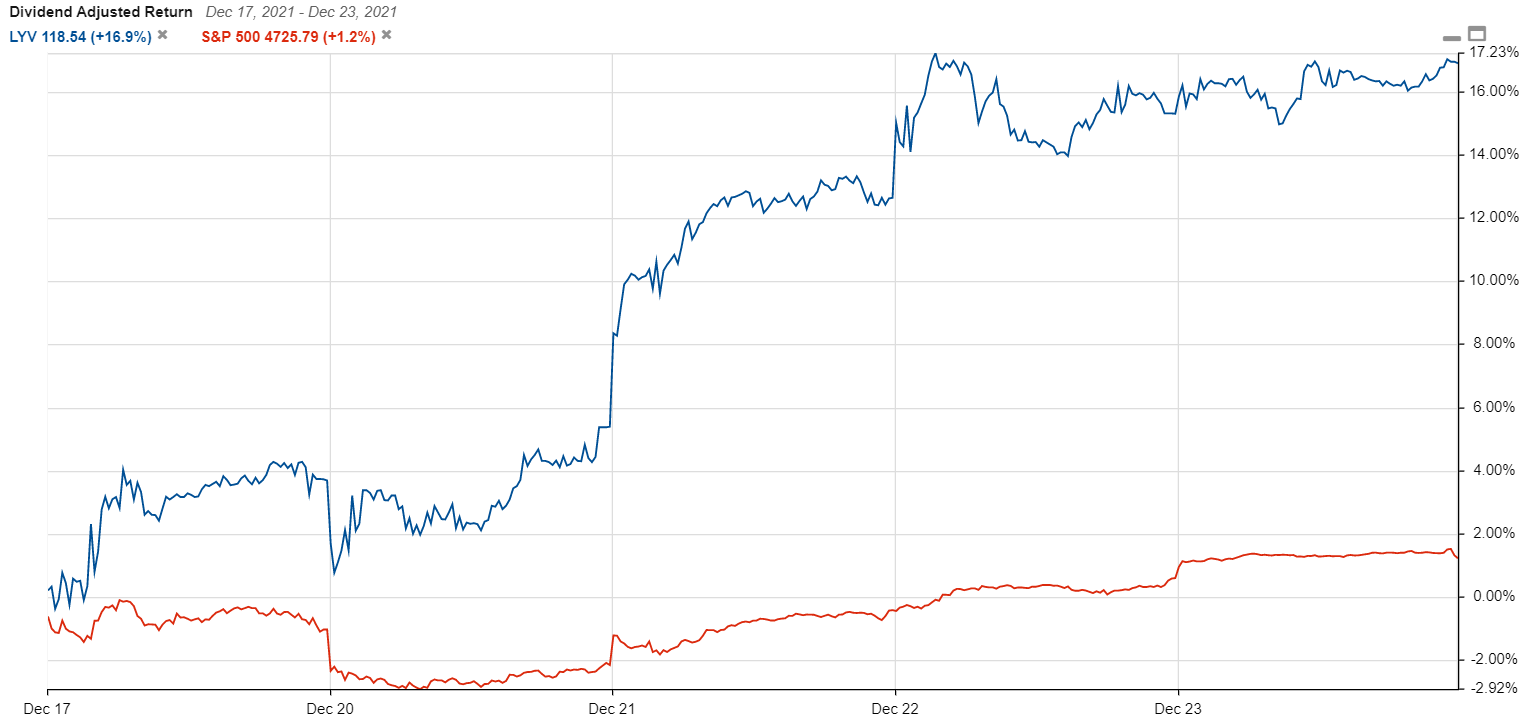
Penn National Gaming [PENN] Up 15.1%
(Click on image to enlarge)
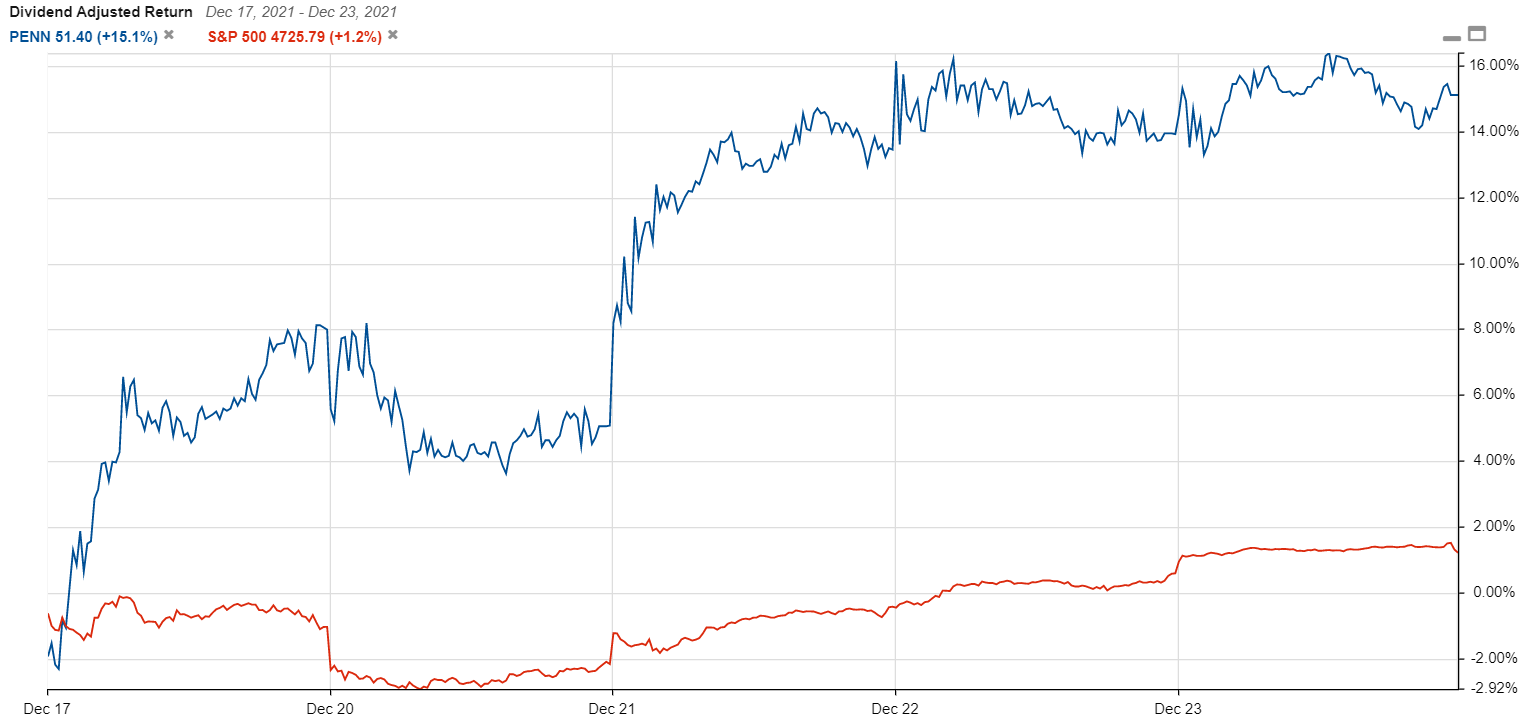
Dave & Busters [PLAY] Up 19.2%
(Click on image to enlarge)

The Dip-Buyers
There is nothing new or special about the idea that some investors are inclined to buy stocks more aggressively when they dip in price, but I think that the Covid lockdowns of 2020 created a whole new crop of dip-buyers who are young, bored, and have plenty of money to spend.
Instead of whiling away the hours they were forced to spend indoors playing video games or betting on sports or casino games, this cohort gelled into what we now call the meme stock traders. They gather in chat rooms and share ideas about stocks that they can pile into and make some fast money by squeezing the shorts.
And they have been wildly successful in many cases. This particular branch of the dip-buying crowd has only allowed one decline of 5% for the entirety of 2021. In 2020, as they were going through their trial-by-fire, they suffered through 8 dips of 5% or more, with 4 of them coming during the pandemic selloff.
2021 saw a single dip of 5% in September
(Click on image to enlarge)
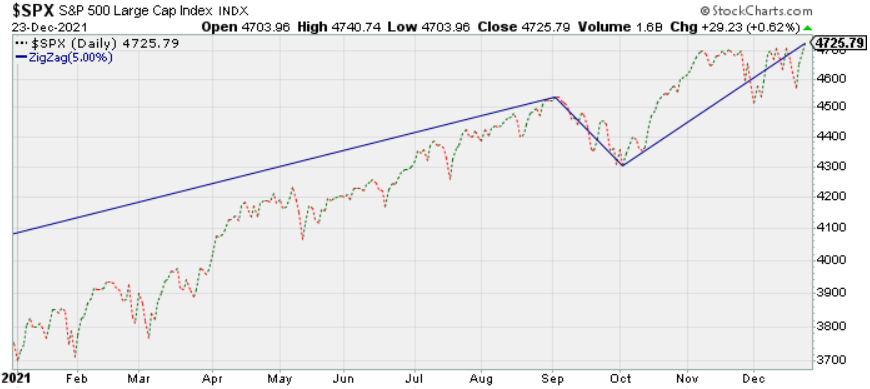
2020 saw eight dips of 5%
(Click on image to enlarge)
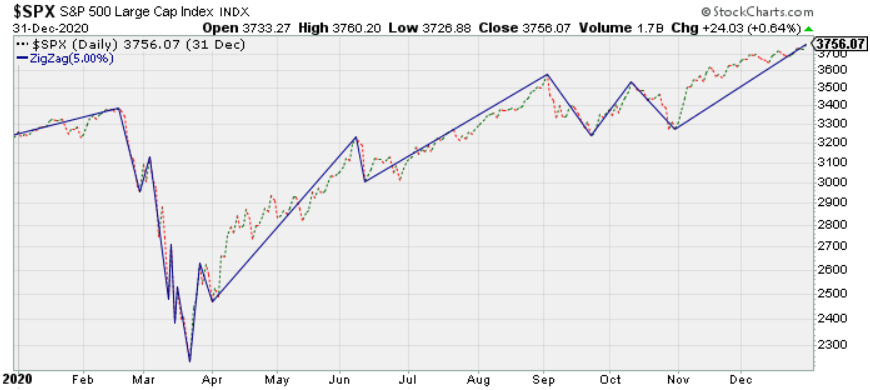
Is there a limit to the dip-buyers success?
Of course, there is a limit. This crowd has been relentless in buying every dip, no matter how small, but they have not and can not repeal the laws of mean reversion, nor can they prevent the next bear market from happening.
There are some dip-buyers who are true believers of the idea that the Fed will always be there when they need it. They know that the Fed is about to start raising rates, but they are confident that the hikes will be gradual and limited in scope.
They know that the economy is on track to keep growing, and they are sure that the Fed will be there with an open checkbook when growth eventually stalls out. They are well aware of the high valuations, but they can live with that because they believe there is no alternative to stocks
The old-school dip-buyers
This younger, more aggressive strain of dip-buyers isn't alone. They have plenty of company from the traditional, old-school types who are not true believers. These folks have been riding the coattails of their younger cohort, and so far it has served them well. But when the wheels start to come off, the old-schoolers will be the first ones out the door, leaving it up to the youngins to do the hard work of trying to fight against the onslaught of selling that will eventually arrive.
That day may not come in 2022. We could, in theory at least, have another year with one or two dips. What's more likely in 2022 is an increase in volatility, with a correction of 10%-15%. The true believers will be buying all the way down, while the old-schoolers will wait for things to settle down before stepping back in.
Final Thoughts
The S&P Top 7 by market cap is the canary in the coal mine. [AAPL, AMZN, FB, GOOGL, MSFT, NVDA, TSLA.] If these leaders continue to weaken, it could be a sign that the correction is coming.
I'm also watching for a reversal of fortune for the reopening stocks I highlighted in the charts above. That would be a troublesome development.
For the dip-buyers, let's see how they handle the next 5% pullback before we even begin to question their commitment. If they remain true to form, they should step in and take the market to a new high. But if the post-dip rally fails, and we get a lower low, that's when the red flags begin to fly.
Disclaimer: This content is for educational purposes only, and ZenInvestor.org is not an investment advisory service, nor an investment advisor, nor does ZenInvestor.org provide personalized ...
more


